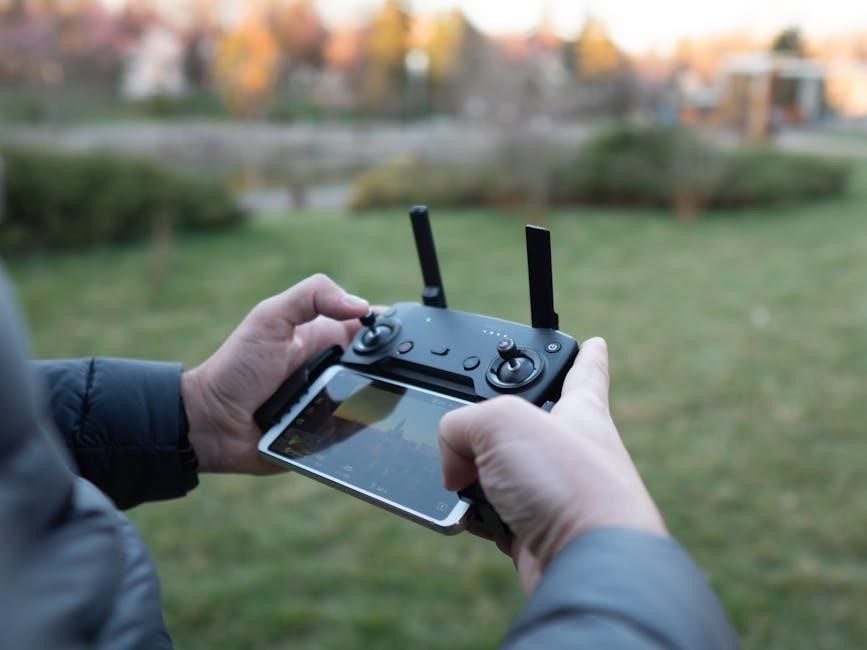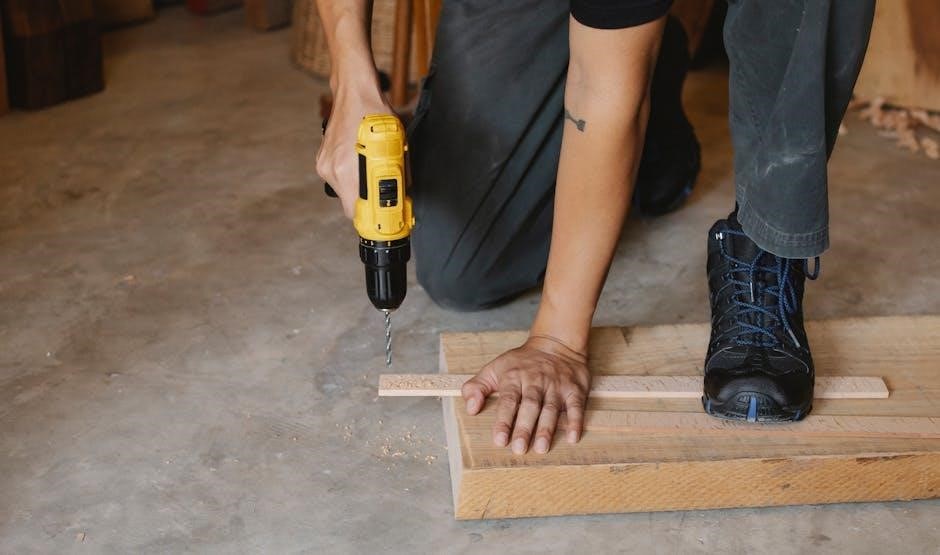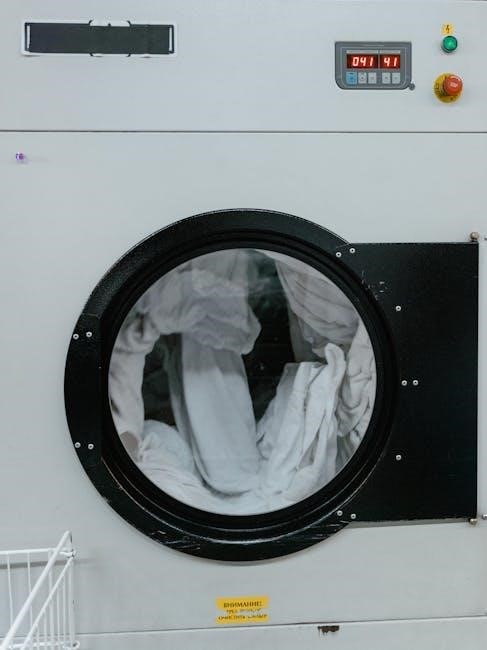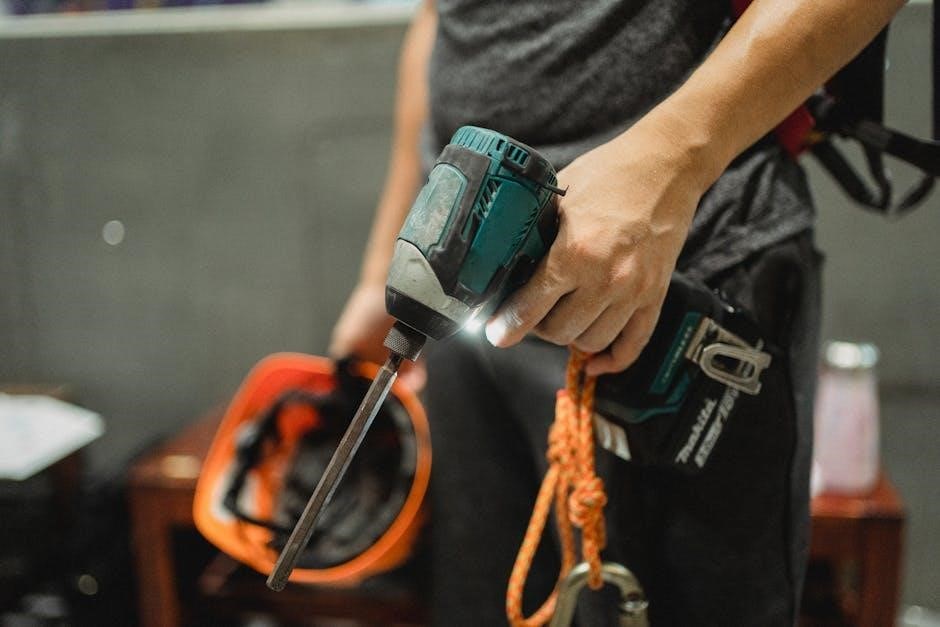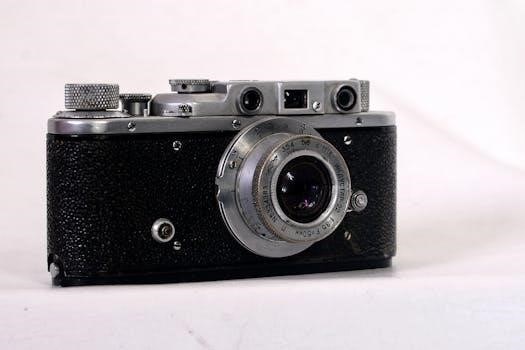Keurig Mini User Manual: A Comprehensive Guide

Welcome! This manual provides essential guidance for your Keurig K-Mini‚ ensuring optimal brewing and longevity. Explore detailed instructions‚
troubleshooting‚ and safety precautions for a delightful coffee experience.
Get Started! Learn about initial setup‚ parts identification‚ and the brewing process‚ maximizing your compact brewer’s potential.
Discover cleaning routines and error solutions for consistent performance.
Descaling is key! Follow the descaling procedure at keurig.com/descale‚ using Keurig Descaling Solution for peak operation.
Welcome to the world of convenient‚ single-cup brewing! The Keurig K-Mini is designed for simplicity and space-saving functionality‚
perfect for small kitchens‚ offices‚ or anyone seeking a quick and easy coffee solution. This compact brewer delivers a fresh‚ flavorful cup
with minimal effort‚ making it an ideal addition to your daily routine.
This user manual will guide you through every aspect of your K-Mini‚ from initial setup and operation to maintenance and troubleshooting.
Whether you’re a first-time Keurig owner or a seasoned coffee enthusiast‚ this guide will ensure you get the most out of your brewer.
Explore video tutorials for a step-by-step visual experience‚ covering everything from brewing your first cup to proper care and cleaning.

The K-Mini is more than just a coffee maker; it’s a lifestyle upgrade. Enjoy the freedom of brewing your favorite beverages – coffee‚ tea‚
or hot cocoa – in under a minute. Prepare to experience the convenience and quality that Keurig is known for‚ all in a remarkably small package!
Unboxing and Initial Setup
Congratulations on your new Keurig K-Mini! Begin by carefully removing the brewer and all included accessories from the packaging.
Ensure all packing materials are removed‚ and inspect the unit for any visible damage. Your K-Mini package should contain the brewer itself‚
the water reservoir‚ and this user manual.
Before your first brew‚ it’s crucial to perform an initial setup. First‚ thoroughly clean the water reservoir with mild soap and water‚
then rinse completely. Fill the reservoir with fresh‚ filtered water to the maximum fill line. Place the reservoir securely onto the brewer.
Plug the K-Mini into a grounded electrical outlet. It’s recommended to perform 3-4 brewing cycles with just water – no K-Cup pod –
to flush out any residual manufacturing residue. This ensures your first cup of coffee tastes its absolute best. Now you’re ready to brew!
Parts Diagram & Identification
Familiarize yourself with your Keurig K-Mini’s components! The key parts include the Water Reservoir‚ easily removable for filling and cleaning.
The K-Cup Pod Holder securely accommodates single-serve pods. The Brew Button initiates the brewing process with a simple press.
Observe the Drip Tray‚ designed to catch any potential spills‚ and is also removable for easy cleaning. The Exit Needle punctures the K-Cup
and delivers hot water. Locate the Handle‚ which you lift to insert a pod and lower to begin brewing.
The Power Cord provides the electrical connection. Note the Exterior Housing‚ constructed for durability.
Understanding these parts will aid in operation‚ maintenance‚ and troubleshooting. Refer to the diagrams included in your manual for visual
identification of each component. Proper knowledge of these parts ensures a seamless brewing experience with your K-Mini.
Understanding the Control Panel
The Keurig K-Mini features a remarkably simple control panel‚ designed for intuitive operation. The primary control is the single Brew Button‚
responsible for initiating the brewing cycle. A single press starts the brewing process‚ delivering your desired cup size.
Powering On: The K-Mini automatically powers on when a K-Cup pod is inserted and the handle is lowered. No separate power button is needed!
Brew Size Selection: While the K-Mini doesn’t have dedicated size buttons‚ it brews a single cup at a time. Ensure the water reservoir is adequately filled.
Indicator Lights: Observe the indicator lights to monitor the brewing status. Lights illuminate during the brewing cycle and may indicate
descaling needs. Automatic Shut-Off: The brewer automatically shuts off after brewing‚ conserving energy. Familiarizing yourself with these simple controls
will ensure a quick and effortless brewing experience.

Brewing Your First Cup
Begin your coffee journey! Fill the reservoir‚ insert a K-Cup‚ and place a mug on the drip tray. Lower the handle and press brew for a perfect cup!
Filling the Water Reservoir
Ensuring proper hydration is crucial for optimal brewing. The Keurig Mini’s water reservoir is easily accessible for convenient filling. Lift the reservoir lid and carefully pour fresh‚ filtered water into the reservoir‚ observing the maximum fill line indicated. Avoid overfilling‚ as this could lead to leakage during the brewing process.
Water quality matters! Using filtered water will significantly improve the taste of your coffee and reduce the need for frequent descaling. The water level must be sufficient to brew your desired cup size; the brewer won’t operate if the water level is too low. Remember to securely replace the reservoir after filling‚ ensuring it’s properly seated to prevent issues.
Minimum water level is essential. The reservoir must be at a minimum level to brew. Regularly check the water level before each brew to guarantee a consistently delicious cup of coffee.
Inserting a K-Cup Pod
Selecting your favorite brew is simple! After filling the water reservoir‚ it’s time to insert your desired K-Cup pod. Lift the Keurig Mini’s handle to open the K-Cup holder. Carefully place a K-Cup pod into the holder‚ ensuring it sits securely. Avoid forcing the pod‚ as this could damage the internal mechanism.
Proper pod placement is key. Once the pod is in place‚ firmly lower the handle to close and pierce the K-Cup. The brewer will automatically seal the pod‚ preparing it for brewing. Ensure the handle is fully lowered for a proper seal and optimal extraction.
Compatibility is important! The Keurig Mini is compatible with most standard K-Cup pods‚ offering a wide variety of flavors and brands. Enjoy your favorite coffee‚ tea‚ or hot chocolate with ease!
Brewing with and without a Mug
Flexibility is a key feature! The Keurig Mini offers brewing convenience with or without a mug‚ adapting to your needs. When using a mug‚ ensure it’s placed securely on the drip tray plate before initiating the brew cycle. A large ceramic mug is recommended during descaling.
Brewing without a mug? No problem! If you prefer to brew directly into a travel mug or other container‚ remove the drip tray plate for extra height. This accommodates taller vessels‚ preventing spills and ensuring a full brew.
Always be cautious! Remember that the brewed coffee will be hot. Handle your mug carefully to avoid burns. The drip tray plate catches any potential drips‚ keeping your countertop clean.
Selecting Brew Sizes
The Keurig Mini simplifies brewing! While designed for single-serve convenience‚ understanding brew size options enhances your experience. This model primarily focuses on a single‚ standard cup size – approximately 6oz to 8oz – ideal for a quick coffee fix.
Adjusting for your preference! Though lacking multiple pre-programmed sizes‚ you can subtly influence the brew strength and volume. Using less water in the reservoir results in a more concentrated brew‚ effectively creating a smaller‚ stronger cup. Conversely‚ filling the reservoir fully yields a larger‚ milder brew.
Experiment to find your perfect cup! The water level directly impacts the final outcome. Remember the minimum water level is required to brew. Explore different water amounts to discover your preferred strength and size within the Mini’s capabilities.

Operation & Features
Enjoy simplicity! The Keurig Mini excels at single-cup brewing‚ offering convenience and efficiency. Its compact design includes an automatic shut-off and removable drip tray for ease of use.
Single-Cup Brewing Process
Brewing is simple! Begin by ensuring the water reservoir is filled with fresh water. Next‚ lift the Keurig Mini’s handle to open the K-Cup pod holder. Insert your desired K-Cup pod‚ then firmly lower the handle to secure it.
Select your mug size! Place a mug on the drip tray plate – a large ceramic mug is recommended for descaling‚ but any mug works for brewing. Choose your preferred brew size.
Start brewing! Press the brew button to initiate the brewing process. The Keurig Mini will automatically pierce the K-Cup pod and brew your single cup of coffee. Once brewing is complete‚ carefully remove the used K-Cup pod and discard it.
Important Note: When descaling‚ lift and lower the handle without a K-Cup pod‚ then press the brew button to dispense the solution;
Compatible K-Cup Pods
Enjoy variety! The Keurig Mini is designed to be compatible with a vast array of K-Cup pods‚ offering endless beverage choices. From classic coffee blends to flavored coffees‚ teas‚ hot cocoa‚ and even specialty drinks‚ the possibilities are extensive.
Official K-Cup pods are guaranteed to work seamlessly with your brewer‚ ensuring optimal flavor extraction and performance. However‚ the Keurig Mini also supports many licensed and third-party K-Cup compatible pods.
Explore your preferences! Experiment with different brands and flavors to discover your favorites. Be mindful that some specialty pods may require a larger brew size for best results.
Always ensure the K-Cup pod is properly inserted and the handle is securely closed before initiating the brewing process. This guarantees a consistent and delicious single-cup experience.
Automatic Shut-Off Feature
Safety and efficiency! Your Keurig Mini is equipped with a convenient automatic shut-off feature designed to conserve energy and enhance safety. This feature automatically powers down the brewer after a period of inactivity‚ typically around 90 seconds.
Peace of mind! You don’t need to worry about accidentally leaving the brewer on. The automatic shut-off activates after the brewing cycle is complete and no buttons have been pressed.
Energy conservation! This feature contributes to reduced energy consumption‚ making your Keurig Mini an environmentally conscious choice. It’s a simple yet effective way to save energy.
Restarting is easy! To resume brewing‚ simply press any button on the control panel. The brewer will quickly reheat and be ready for your next cup. This ensures a seamless brewing experience.
Removable Drip Tray
Spill protection! The Keurig Mini features a removable drip tray‚ designed to catch any accidental drips or spills during the brewing process. This helps keep your countertop clean and tidy‚ preventing messes and ensuring a pleasant brewing experience.
Easy cleaning! The drip tray is easily removable for quick and convenient cleaning. Simply lift it out‚ rinse with warm‚ soapy water‚ and dry thoroughly before replacing it. Regular cleaning prevents buildup and maintains hygiene.
Accommodate mugs! The drip tray accommodates a variety of mug sizes‚ providing a stable surface for your favorite cup. It’s designed to fit most standard coffee mugs comfortably.
Large ceramic mugs! When brewing directly into a large ceramic mug‚ ensure it’s securely placed on the drip tray plate. This prevents accidental tipping and potential spills. Maintaining a clean brewing area is simple with this feature!

Maintenance & Cleaning
Keep it fresh! Regular cleaning ensures optimal performance and extends the life of your Keurig Mini. Descale‚ clean the reservoir‚
and wipe the exterior frequently for best results.
Descaling the Keurig Mini
Descaling is crucial for removing mineral buildup that can affect your Keurig Mini’s brewing performance. Keurig recommends descaling every three to six months‚ depending on water hardness. Begin by emptying the water reservoir and pouring in one-third (136 ml/4.6 oz) of Keurig Descaling Solution.
Add fresh water to the reservoir‚ filling it to the “MAX” line. Place a large ceramic mug on the drip tray plate. Lift and lower the handle – do not insert a K-Cup pod; Press the brew button to begin the descaling cycle. Allow the solution to dispense completely into the sink.
Repeat the process with fresh water only‚ running two full brew cycles to rinse away any remaining descaling solution. For detailed instructions and further support‚ visit keurig.com/descale. Hold the handle together for 3 seconds to initiate the process.
Cleaning the Water Reservoir
Regular cleaning of the water reservoir is essential for maintaining the freshness of your brewed coffee and preventing mineral buildup. Begin by removing the water reservoir from the Keurig Mini brewer. Discard any remaining water and wash the reservoir with mild dish soap and warm water.
Rinse thoroughly to ensure no soap residue remains‚ as this can affect the taste of your coffee. Inspect the reservoir for any visible mineral deposits or discoloration. If present‚ use a soft cloth or brush to gently scrub these areas.
Pay attention to the reservoir lid and any removable parts‚ cleaning them separately with soap and water. Ensure all components are completely dry before reassembling and placing the reservoir back onto the brewer. Consistent cleaning promotes optimal performance and extends the life of your Keurig Mini.
Cleaning the Exterior
Maintaining a clean exterior not only enhances the appearance of your Keurig Mini but also contributes to its overall hygiene. Begin by unplugging the brewer and allowing it to cool completely before cleaning. Use a soft‚ damp cloth to wipe down the exterior surfaces‚ including the housing‚ drip tray‚ and control panel.
Avoid abrasive cleaners or scouring pads‚ as these can damage the finish. For stubborn stains or spills‚ a mild dish soap solution can be used‚ followed by a thorough rinsing with a clean‚ damp cloth. Ensure no soap residue remains on the surfaces.
Pay attention to the areas around the K-Cup pod holder and the brew button‚ as these are prone to coffee splatters. Regularly wiping down the exterior will prevent buildup and keep your Keurig Mini looking its best.
Cleaning the Exit Needle
Regular cleaning of the exit needle is crucial for ensuring optimal brewing performance and preventing clogs. The exit needle punctures the K-Cup pod during brewing‚ and coffee grounds can accumulate over time‚ hindering water flow.
To clean the exit needle‚ carefully remove the K-Cup pod holder. Locate the exit needle and gently use a paperclip or a Keurig cleaning tool to dislodge any coffee grounds or debris. Be extremely cautious to avoid bending or damaging the needle.
Inspect the needle for any visible blockages and repeat the cleaning process if necessary. A clean exit needle ensures a smooth and consistent brew every time. It’s recommended to clean the exit needle after every 12 brews‚ or more frequently if you notice brewing issues.

Troubleshooting
Encountering issues? This section offers solutions for common problems like brewing failures‚ leaks‚ and error codes.
Refer to detailed guides for descaling and ensuring optimal Keurig Mini performance.
Keurig Mini Not Brewing
Problem: Your Keurig Mini isn’t dispensing water or initiating the brewing cycle. Several factors could contribute to this issue. First‚ verify the water reservoir is adequately filled; the water level must be at a minimum to brew. Ensure the reservoir is properly seated and locked into place.
Next‚ check for clogs. Run a descaling cycle using Keurig Descaling Solution‚ following the instructions at keurig.com/descale. This removes mineral buildup that can obstruct water flow; If descaling doesn’t resolve the issue‚ inspect the exit needle for blockage. Carefully clean it to ensure unobstructed water passage.
Also‚ confirm the handle is fully lowered after inserting a K-Cup pod. The brewer won’t operate if the handle isn’t securely engaged. Finally‚ ensure the unit is properly plugged in and receiving power. If problems persist‚ consult the full user manual or Keurig’s customer support for further assistance.
Water Leaking Issues
Problem: Discovering water leakage from your Keurig Mini can be concerning. Several potential causes require investigation. First‚ ensure the water reservoir is correctly seated and securely locked into place. Improper seating is a common source of leaks.
Inspect the reservoir for cracks or damage; replace it if necessary. Also‚ check the K-Cup pod holder assembly for proper alignment and sealing. A loose or damaged holder can cause water to bypass the brewing system.
Verify the removable drip tray is correctly positioned and isn’t overflowing. If leaks persist‚ examine the area around the exit needle for any signs of blockage or damage. A clogged needle can cause pressure buildup and leakage. Finally‚ ensure the unit is placed on a level surface to prevent spills. If issues continue‚ contact Keurig support.
Error Codes & Solutions
Error codes on your Keurig Mini indicate specific issues requiring attention. While the K-Mini has limited display capabilities‚ recognizing operational failures is crucial. A common issue is a failure to heat‚ often resolved by descaling the unit – follow instructions at keurig.com/descale.
If the brewer fails to pierce the K-Cup pod‚ ensure the pod is correctly inserted. A blockage in the exit needle may also be the cause; clean it thoroughly. Low water levels can also trigger errors‚ so confirm the reservoir is adequately filled.
For persistent issues‚ unplug the brewer for several minutes‚ then restart. If error codes continue‚ consult the Keurig website for a comprehensive list and troubleshooting steps specific to your model. Contact Keurig customer support for assistance with unresolved errors.
Descaling Process Troubleshooting

Descaling is vital for maintaining your Keurig Mini’s performance‚ but issues can arise. If the descaling solution doesn’t flow‚ ensure the reservoir is properly seated and the water level is sufficient. A clogged needle can restrict flow; attempt a manual cleaning with a paperclip (unplug the brewer first!).
If the descaling cycle seems incomplete‚ repeat the process. Sometimes‚ mineral buildup is substantial‚ requiring multiple cycles for full removal. Always flush the system with fresh water after descaling – brew several cups to eliminate any residual solution.
Persistent issues may indicate a more significant blockage. Refer to keurig.com/descale for detailed troubleshooting or contact Keurig support. Remember to use only Keurig Descaling Solution for optimal results and to avoid damaging your brewer.

Safety Information
Prioritize safety! Always follow instructions carefully‚ avoiding contact with hot surfaces. Ensure proper electrical grounding and usage‚ preventing hazards. Read all warnings!
Important Safety Instructions
Read all instructions before use. To reduce the risk of fire‚ electric shock‚ or injury‚ always adhere to these safety guidelines. This appliance is intended for household use only. Do not immerse the brewer in water or other liquids. Avoid operating the Keurig Mini with a damaged cord or plug‚ or after a malfunction.
Hot surfaces warning: Be cautious of hot surfaces during and after brewing. Avoid touching the exterior during operation. Allow the brewer to cool completely before cleaning. Keep the appliance out of reach of children. Close supervision is necessary when used near children.
Electrical safety: Ensure the voltage of your outlet matches the brewer’s specifications. Never operate the appliance with wet hands. Unplug the brewer when not in use and before cleaning. Do not use outdoors. Never attempt to repair the appliance yourself; contact qualified service personnel for assistance.
Electrical Safety
Crucially‚ ensure your outlet voltage matches the Keurig Mini’s requirements to prevent damage. Never operate the brewer with a damaged cord or plug – discontinue use immediately and seek repair. Avoid using extension cords; plug directly into a grounded outlet. Do not operate the appliance with wet hands‚ as this poses a significant shock risk.
Unplugging is essential: Always unplug the brewer from the outlet when not in use‚ before cleaning‚ or if a malfunction occurs. Never yank the cord; grasp the plug to disconnect. Do not insert foreign objects into the appliance. Avoid running the cord under carpeting or near heat sources.
Qualified service only: Do not attempt to repair the Keurig Mini yourself. Contact authorized service personnel for any repairs or adjustments. Improper repairs can create hazards. Never immerse the brewer‚ cord‚ or plug in water or other liquids. Electrical shock can be fatal.
Hot Surface Warnings
Caution! The Keurig Mini’s exterior surfaces‚ particularly around the brew head and drip tray area‚ become extremely hot during and immediately after brewing. Avoid touching these areas to prevent burns. Allow sufficient cooling time before handling or cleaning.
Steam Hazard: Be mindful of escaping steam during the brewing process. Keep hands and face away from the steam vent to avoid scalding. The hot water dispensed is also a burn risk; exercise caution when handling freshly brewed coffee.
Protect Children: Keep the Keurig Mini out of reach of children. Supervise its use around children to prevent accidental burns. Never allow children to operate the brewer unsupervised. The hot components pose a serious safety hazard. Use care when placing a mug‚ ensuring stability to avoid spills of hot liquid.
Proper Usage Guidelines

Water Reservoir: Always fill the water reservoir with fresh‚ cold water. Do not overfill beyond the maximum fill line. Ensure the reservoir is securely placed before brewing to prevent leaks.
K-Cup Pods: Use only K-Cup pods specifically designed for Keurig brewers. Do not attempt to use reusable filters or other incompatible pods‚ as this may damage the machine. Lift and lower the handle fully to pierce the pod correctly.
Brewing Process: Place a suitable mug on the drip tray before initiating the brew cycle. Select your desired brew size. Avoid interrupting the brewing process. Remember the water level must be sufficient to brew. Regularly descale your Keurig Mini following the instructions in the manual or on keurig.com/descale for optimal performance and longevity.



















